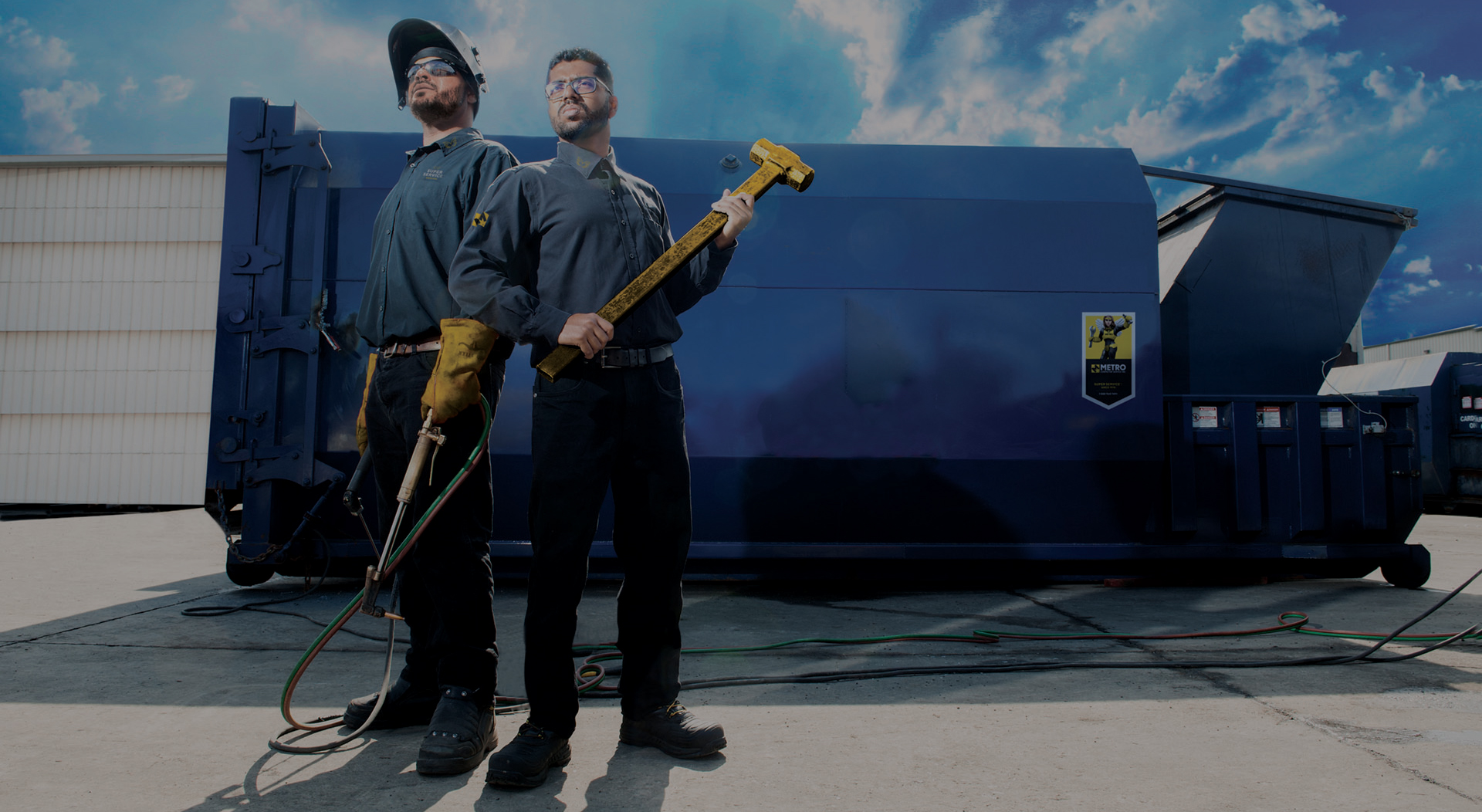Rent a Baler for Hassle-Free Hazardous Waste Handling
Rent a Baler for Hassle-Free Hazardous Waste Handling
Blog Article
Exploring the Important Duty of Waste Equipment in Modern Recycling Processes and Sustainable Waste Disposal Practices
The important function of waste devices in modern-day recycling procedures highlights its relevance in attaining lasting waste disposal practices. Advanced systems, such as automated sorting technologies and compactors, not just enhance effectiveness but also play a crucial duty in minimizing contamination rates and boosting product healing. As the need for more lasting options expands, it is necessary to analyze exactly how these innovations adjust to developing difficulties within waste management. What innovative innovations are on the horizon that could further change these procedures?
Value of Waste Devices
Why is waste devices critical in the reusing procedure? By helping with the splitting up of products, waste equipment decreases contamination, which is extremely important in guaranteeing high-quality recyclables that can be reintroduced right into manufacturing cycles.
Furthermore, waste devices boosts operational effectiveness and safety and security within recycling centers. Advanced equipment, such as shredders and balers, permits the rapid processing of big quantities of waste, decreasing labor expenses and handling time. In enhancement, making use of specialized tools lowers the threat of injury among workers by automating dangerous jobs.
Additionally, the ecological effect of recycling is intensified by reliable waste equipment. By enhancing the reusing procedure, centers can considerably decrease the quantity of waste sent out to land fills, thereby contributing to sustainability efforts. Finally, waste equipment is not merely an ancillary component of recycling; it is a fundamental facet that drives efficiency, safety and security, and ecological stewardship in modern-day waste administration techniques.
Types of Waste Tools
The performance of recycling procedures is very closely connected to the certain types of waste tools made use of while doing so. baler rental. Different categories of tools are indispensable to the collection, arranging, processing, and transport of recyclable materials
Firstly, collection tools, such as waste collection trucks and bins, is essential for collecting recyclables from different resources, including residential, business, and commercial places. As soon as collected, arranging tools, consisting of conveyor belts, shredders, and magnetic separators, plays a critical role in identifying different product types, guaranteeing that impurities are eliminated prior to processing.
Processing devices, such as balers and compactors, additionally prepares products for recycling by compressing and packaging them into workable sizes. This not only enhances space but also boosts transport performance. Additionally, specialized equipment like granulators and extruders is utilized for changing materials into recyclable kinds, especially in plastic recycling.

Function in Recycling Procedures
In reusing processes, the function of waste tools is essential in making sure efficiency and efficiency at every phase. This tools encompasses a variety of equipment designed to manage, process, and type materials that are to be recycled. The preliminary phase involves collection and transport, where compactors and balers play a crucial function in enhancing the volume of materials for transit, hence decreasing functional costs.
As soon as at the recycling facility, shredders and crushers enter play, damaging down materials right into workable dimensions ideal for more processing. These equipments add to boosting the surface location of recyclables, helping with much more reliable product recuperation. Sorting systems, furnished with innovative innovations such as conveyor belts and optical sensors, make sure that materials are accurately divided by kind, consequently making the most of the high quality of the recycled end product.
Furthermore, specific devices for handling particular materials-- such as glass, have a peek here plastics, and metals-- makes sure that each kind is dealt with in one of the most effective manner. In general, the integration of advanced waste tools into the recycling process not only simplifies operations but also significantly adds to the total recovery rates of valuable products, highlighting its crucial role in modern reusing efforts.
Effect on Lasting Practices
With the efficient operation of waste equipment, reusing processes significantly boost lasting techniques across different sectors. This impact is realized through increased product recuperation prices, which decrease the need for virgin resources. By enhancing sorting and handling features, advanced waste tools minimizes contamination in recyclable materials, thus enhancing the quality of recycled result. The reduction of waste sent out to garbage dumps is one more important benefit, as it minimizes ecological deterioration and minimizes greenhouse gas discharges associated with decay.

Furthermore, the assimilation of smart innovations in waste monitoring systems permits for real-time information monitoring and analysis, causing more enlightened decision-making and operational performances. As industries significantly focus on sustainability, the duty of waste tools comes to be vital in shaping practices that straighten with environmental stewardship and regulatory conformity. Ultimately, the harmony in between waste tools and reusing processes plays a vital role in progressing wider sustainability objectives across areas and sectors alike.
Future Patterns in Waste Administration
Emerging trends in waste management are positioned to reshape the landscape of recycling and source healing significantly. One of the most critical shifts is the assimilation of innovative technologies such as expert system, artificial intelligence, and the Internet of Points (IoT) These developments promote enhanced arranging procedures, boosting the effectiveness and accuracy of reusing procedures. Smart waste containers furnished with sensing units can keep track of waste degrees in real-time, maximizing collection paths and reducing operational expenses.
Furthermore, the round economic situation design is gaining traction, promoting the concept of recycling products as opposed to taking care of them. This fad urges services to design items with end-of-life considerations in mind, driving the need for cutting-edge waste management options.
Furthermore, public blog recognition and interaction in sustainability more helpful hints methods get on the increase, leading to increased participation in recycling programs. Government plans are also progressing, with more stringent regulations on waste disposal and rewards for sustainable practices.
As these fads assemble, they produce a more effective, sustainable waste administration system that not just reduces environmental influence yet additionally fosters financial growth with source recovery and technology in waste tools. The future of waste monitoring looks appealing, driven by innovation and a commitment to sustainability.
Verdict
In final thought, waste tools plays a critical duty in enhancing the effectiveness and performance of modern-day reusing procedures. By reducing contamination and taking full advantage of product recovery, progressed equipment sustains lasting garbage disposal methods and fosters a circular economic climate. The incorporation of smart modern technologies further optimizes these efforts, ensuring liable environmental stewardship. As waste management proceeds to advance, the importance of ingenious waste equipment will remain critical in accomplishing sustainability objectives and dealing with the difficulties of source deficiency.
Report this page